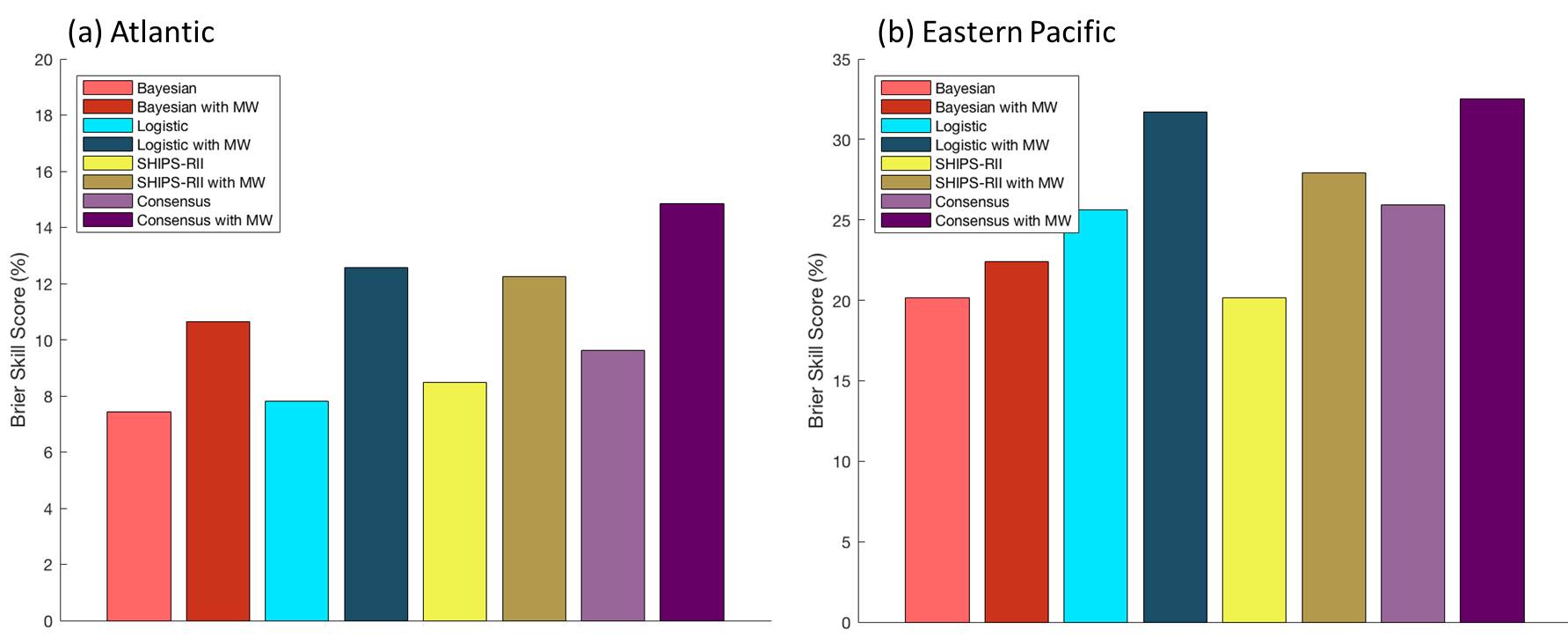
[ Archive ]

 |
CIMSS-NOAA Weekly Report [ Archive ] |
 |
ASPB AND CIMSS WEEKLY HIGHLIGHTS FOR THE WEEK ENDING MARCH 24, 2017
IN THE PRESS:
ITEMS FOR THE ADMINISTRATOR:
ITEMS FOR THE ASSISTANT ADMINISTRATOR:
ITEMS FOR THE OFFICE DIRECTOR, STAR:
GSICS Annual Meeting: The University of Wisconsin-Madison Space Science and Engineering Center (SSEC) hosted the 2017 Annual Meeting of the Global Space-based Inter-Calibration System (GSICS). GSICS is an international body whose primary function to promote and develop common methods for the calibration of meteorological satellite sensors. GSICS is comprised of Data Working Group (GDWG), a Research Working Group (GRWG) and Coordination Center (GCC). All of these bodies met during this workshop. The local hosts for the meeting were Drs Andrew Heidinger and David Tobin. Several presentations about the calibration work done at SSEC were made on the first day of the meeting. The presentations and meeting summaries are available at the GSICS Wiki (http://gsics.atmos.umd.edu/wiki/Home). (A. Heidinger, E/RA2, 608-263-6757, andrew.heidinger@noaa.gov)
WMO Polar and High Mountain Observations, Research, and Services Panel Meeting: The seventh meeting of the World Meteorological Organization's (WMO) Executive Council Panel of Experts on Polar and High Mountain Observations, Research, and Services (EC-PHORS) was held in Ushuaia, Terra Del Fuego, Argentina, 21-24 March 2017. The Southern Scientific Research Center (Centro Austral de Investigaciones Scientíficas) hosted the meeting. The Panel provides guidance in the development of the WMO Strategic Plan, facilitates the acquisition, exchange, and archiving of observational data, and makes recommendations on research and operations related to the polar regions. Jeff Key (NESDIS/STAR) is one of three U.S. representatives. (J. Key, E/RA2, 608-263-2605, jkey@ssec.wisc.edu)
NWS Mission Delivery Council Briefed on ProbSevere Model: M. Pavolonis (NOAA/NESDIS/STAR) briefed the National Weather Service (NWS) Mission Delivery Council (MDC) on the operational readiness of the ProbSevere model developed by STAR in collaboration with the Cooperative Institute for Meteorological Satellite Studies (CIMSS). ProbSevere distills large volumes of numerical weather prediction, satellite, radar, and lightning data into information that directly improves severe weather warnings. The NWS MDC is chaired by the NWS Chief Operating Officer (COO) and consists of the NWS Regional Directors, National Centers for Environmental Prediction (NCEP) Director, National Water Center (NWC) Director, and Director of the Analyze, Forecast, & Support Office (AFSO). The MDC is charged with validating and prioritizing field requirements and approving operational policies. Based on the briefing and supplementary material, the MDC classified ProbSevere as a potential FY18 NWS Office of Science and Technology Integration project within the Annual Operating Plan. The end goal is to transition ProbSevere to NCEP operations. The MDC recognized that “big data” information systems like ProbSevere are needed to cope with data overload. They also recognized that systems that rely on data from multiple NOAA line offices present a unique challenge in the research-to-operations process. (M. Pavolonis, E/RA2, 608-263-9597, Mike.Pavolonis@noaa.gov)
ITEMS FOR THE DIVISION CHIEF, CoRP:
Interdepartmental Hurricane Conference: Researchers from the Cooperative Institute for Meteorological Satellite Studies (CIMSS) gave presentations at the Tropical Cyclone Operations and Research Forum (TCORF)/71st Interdepartmental Hurricane Conference (IHC) in Miami, FL occurring 14-16 March 2017. The two CIMSS-led presentations highlighted research to operations work funded by NOAA's Joint Hurricane Testbed (JHT). Tony Wimmers (CIMSS) presented on "Improved Eyewall Replacement Cycle Forecasting Using a Modified Microwave-Based Algorithm", which included co-authors Jim Kossin (NOAA/NCEI) and Derrick Herndon (CIMSS). Christopher Rozoff (now at Research Applications Laboratory/National Center for Atmospheric Research) presented on "Probabilistic Prediction of Tropical Cyclone Rapid Intensification Using Satellite Passive Microwave Imagery", with co-author Chris Velden (CIMSS). (C. Rozoff, CIMSS/NCAR-RAL, C. Velden, CIMSS, 608-262-9168, J. Kossin, NCEI, 608-265-5356, D. Herndon, CIMSS)
 (Click image to enlarge)
(Click image to enlarge)
Figure caption: Brier skill scores for the Bayesian, logistic regression, SHIPS-RII, and consensus models developed for predicting the probability for rapid intensification of tropical cyclones. Scores with and without inclusion of microwave-based predictors in the (a) Atlantic and (b) Eastern Pacific Ocean basins are shown. These results are for the probability of tropical cyclone rapid intensification in the next 24-h time period. Rapid intensification is defined here as a 24-h increase in the 1-min average 10-m maximum wind speed of at least 35 kt. The results with added satellite MW predictors are a notable improvement in terms of relative gains in model performance from other predictors.
Final Course on GOES-R at NWS Training Center: The last in a series of seven instructor-led courses on the new Geostationary Operational Environmental Satellite R-Series (GOES-R) at the National Weather Service (NWS) Training Center in Kansas City, Missouri, was held from 21 through 23 March 2017. The participants were NWS Science and Operations Officers (SOOs). Jordan Gerth and Scott Lindstrom, both researchers affiliated with the Cooperative Institute for Meteorological Satellite Studies (CIMSS), led approximately 14 hours of instruction and student lab activities on the Advanced Baseline Imager (ABI) at each course. With nearly 100 hours of cumulative teaching time over the seven courses, this is believed to be the largest instructor-led training effort for GOES-R, which required months of preparation. The lab activities used the Satellite Information Familiarization Tool (SIFT), special software that CIMSS built at the request of the NWS to keep students engaged in the learning process. (J. Gerth, CIMSS, 608-263-4942, S. Lindstrom, CIMSS, 608-263-4425, T. Schmit, E/RA2, 608-263-0291, tim.j.schmit@noaa.gov, K. Strabala, CIMSS, 608-263-8752)
U.S. National Climate Assessment Lead Authors Meeting Attended: Jim Kossin (NCEI/CWC) attended the third Lead Authors' Meeting of the Fourth U.S. National Climate Assessment (NCA4) Climate Science Special Report (CSSR). Kossin is the Chapter Lead and a Lead Author on Chapter 9 ("Extreme Storms"), a Lead Author on chapters 1, 3, and 5 ("Introduction: The Changing Climate", "Detection and Attribution of Climate Change", "Large-Scale Circulation and Climate Variability"), and a member of the Executive Summary Core Writing Team. (Jim Kossin, NCEI/CWC, 608-265-5356)
VISITORS:
NEXT WEEK:
LOOKING AHEAD:
| Archived Weeklies Page | Submit a report item |